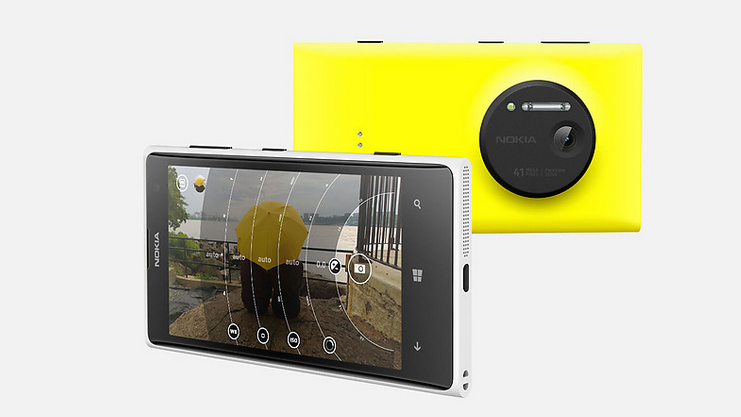Why you can trust TechRadar
The camera module in the Lumia 1020 is large. Every time you take the phone out, you'll notice it, and so will everyone else around you. While the smartphone itself is smaller than its predecessor, the Lumia 920, the camera makes it feel a little more unwieldy.
You'll notice immediately that the camera features a Xenon flash, which has a white balance closer to daylight or about 5,600-5,800 Kelvin, rather than the blue hue given off by LED flash units you'd find on most smartphones. The flash is powerful, too, so in the event you need to use it, you'll have a good range of coverage.
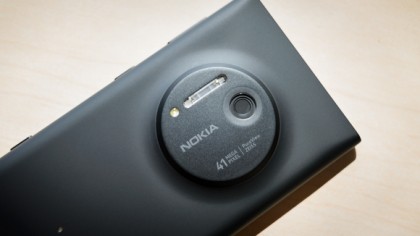
Nokia also claims that the flash pulse is very fast, so that you can freeze your subjects while retaining ambient light. While flash photography on a smartphone is rarely ever pretty, it's not bad on the Lumia 1020.
When you first turn on the phone, you'll be guided through the camera software. Nokia takes you through all the controls and features of the camera, and you're given tips on how to make the best of it.
This tells us what Nokia really intends this phone for, and it's not spending all day browsing the Internet. Once you're done with the tutorial, you're ready to use the camera. Or the phone, if you'd like.
Nokia Pro Cam is the default camera app, and it's intuitive enough if you have any experience using a DSLR or compact camera. It offers more control over focus and exposure than most smartphone cameras, but Nokia's claim that many of these features are found only on a DSLR isn't entirely true.
You can also ignore all those fancy features and just tap to focus and let the auto settings on the camera do the rest for you.
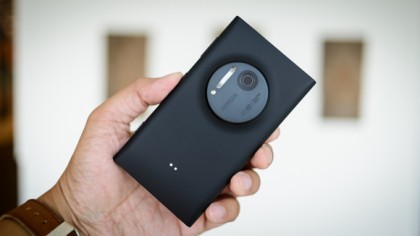
Now, just because the Lumia 1020 has a 41MP camera, it doesn't mean you're going to be shooting 41MP photos all the time. By default, you're storing 5MP oversampled photos, and I'll explain what that means later. If you set the aspect ratio to 16:9, you'll be taking 34MP photos. Change that to 4:3 and you're taking 38MP photos.
The 5MP images are the ones you can share on Twitter, Facebook or via e-mail, just as you would on any other smartphone. The big photos (34MP and 38MP) have to be transferred to a computer if you want to edit, print or share them. The file size would be too large to share or transfer over AT&T's network, and would it would kill your data plan limits in no time.
Because of the massive resolution of the photos, you can crop them down dramatically without suffering from too much loss of quality. Alternatively, you get up to 3x lossless zoom while shooting photos. That means you can zoom on your phone like you would on other smartphones, but image quality and details won't degrade, and the end result would still be a 5MP image.
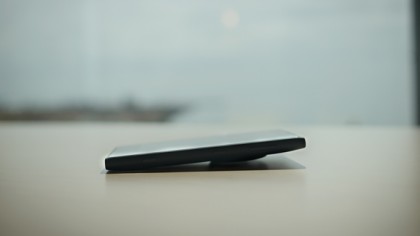
If you're interested in the way this works, you can read Nokia's white paper on the 41MP PureView camera. But here's a quick version of how oversampling works in this case: Nokia uses several pixels to act as one pixel to gather more data and details in a photo. Instead of a 5MP sensor capturing 5MP images, you have a 41MP sensor whose pixels act in such a way that it captures 5MP images.
Yeah, it sounds complicated and the white paper goes into more detail than I can explain here, but all you need to know is that your 5MP photos will look a hell of a lot better than, say, photos from a phone with a standard 5MP camera (like the iPhone 4).
Now let's talk about actual performance. Image quality on the Lumia 1020 is great for a smartphone, let's just get that out of the way now. In auto mode, photos are generally well exposed with good dynamic range. Details are clear and sharp, and colors are accurate and rich. Most smartphone photos aside from the iPhone tend to be a little flat out of the camera, but the Lumia 1020 offers good color and contrast without having to edit photos.
Our biggest gripe with the device is the camera lag from the time it takes to fire up to taking actual photos and taking photos in rapid succession.
The Lumia 1020's camera takes a whole second longer than the iPhone 5 camera to get started. You may be thinking that isn't much time at all, but it's long enough to miss a critical moment. Because of the massive file size, it also takes a long time process and save, which means you can't go shooting several photos at once. You have to wait, then wait some more.
When you press the shutter, whether it's the on-screen button or the physical one, the camera takes a second to focus and to snap your photo. Sometimes it works a little faster, sometimes it doesn't. This means action photos or photos that require you to get a shot at just the right moment are rarely ever going to work out. On the other hand, still life pictures are just fine. You can take photos of your meals all day without worry.
The camera is undoubtedly the selling feature for this phone. Otherwise, it's just another Windows Phone device from Nokia. So the questions you have to ask yourself are, "What am I going to do with these photos? Do I really need 34 or 38 megapixels? How often do I crop my images? How often do I zoom? Will it replace my point-and-shoot or DSLR?"
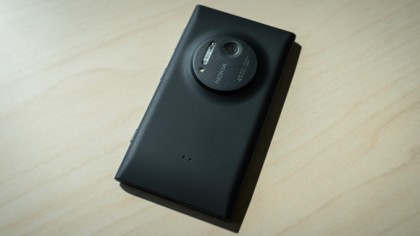
Allow us to answer that last question for you: no. While the Lumia 1020's software offers you more control than your average smartphone camera, it doesn't offer you the same control or flexibility as a point-and-shoot camera or DSLR.
At worst, a point-and-shoot will let you adjust your aperture for depth-of-field adjustments. The Lumia 1020 doesn't do that. Moreover, your average point-and-shoot camera has a bigger imaging sensor than the 1020, and likely better optics, so image quality, dynamic range and high ISO noise performance is better.
There's also no sense in comparing the 1020 to a DSLR, because even the most basic DSLR with a kit lens will outperform the 1020 in any situation.
At this point, you may be asking yourself whether the Lumia 1020 will replace any of your dedicated cameras. It won't. But what it will do is give you better image quality than any other smartphone on the market today, and if you use your phone to take 90% or more of your everyday photos, you can't do better than that.
